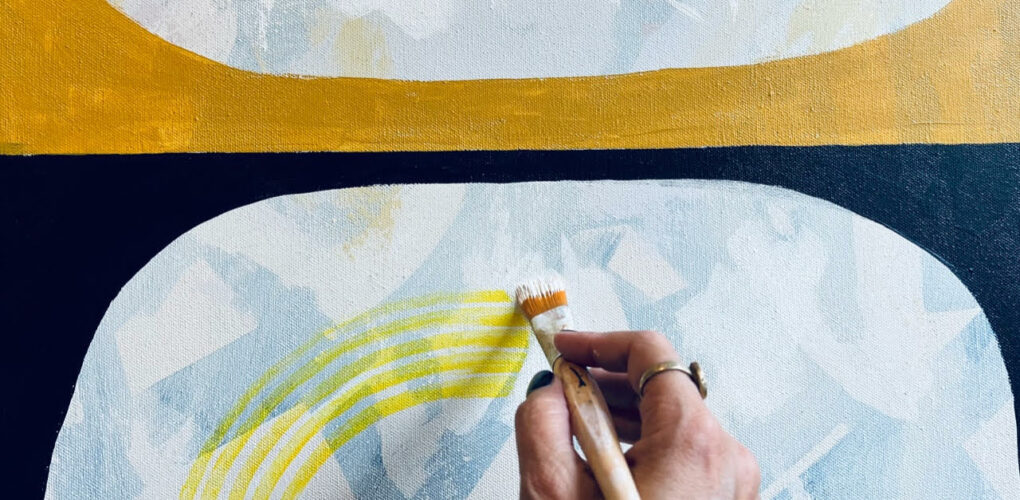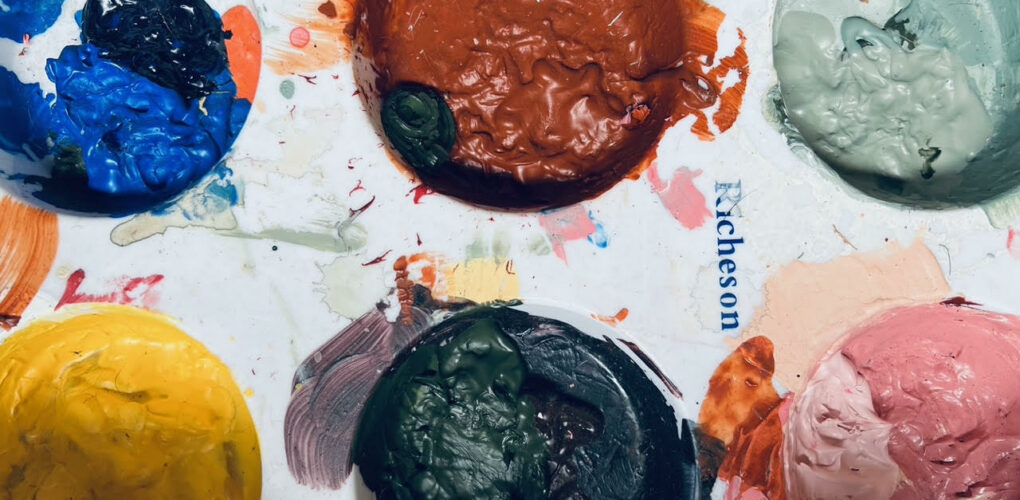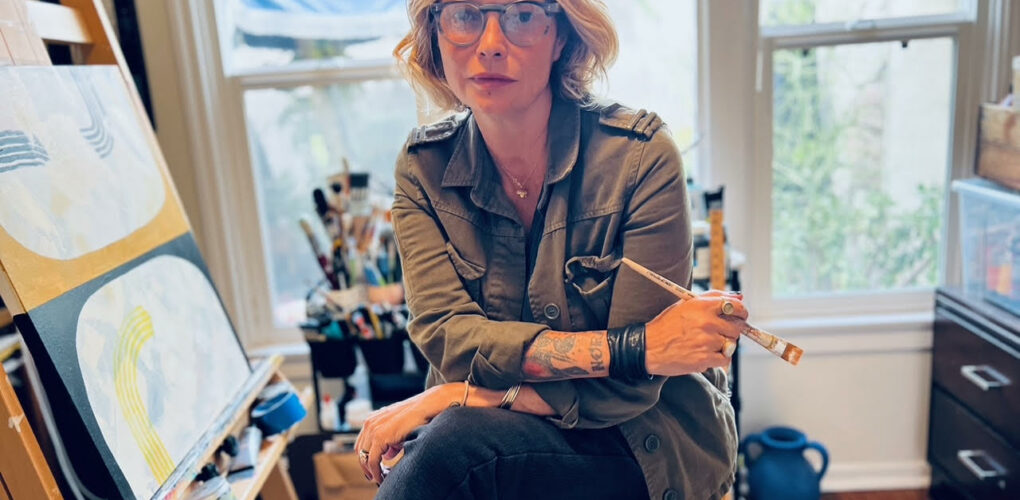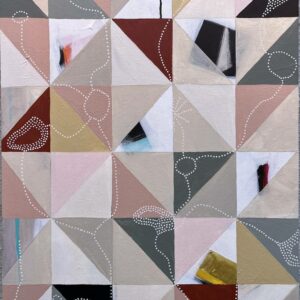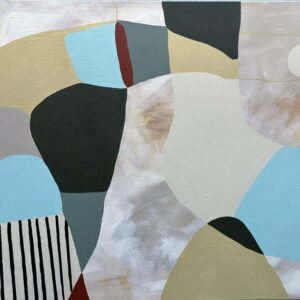One to Watch
 Good Vibrations: Sachiko Bradley’s Positively-Charged Paintings
Good Vibrations: Sachiko Bradley’s Positively-Charged Paintings
Artist Sachiko Bradley was born in Kathmandu and raised among artist communities in Nepal, India, Malaysia, Hong Kong, and Italy. Now based in Los Angeles, Sachiko’s paintings combine themes of racial identity, geometry, family, and astrology with her intentional and playful color palettes. She was recently featured in the LA Times for her African-inspired hand-painted murals. Keep reading to learn more about Sachiko’s eclectic background, commitment to positivity, and artistic practices.
Tell us about who you are and what you do. What’s your background?
My name is Sachiko Bradley. I was born in Nepal, my mom is African-American, and my father is British. My childhood was very bohemian, traveling all over Asia and Europe. My father was an artist, so I grew up in that world, surrounded by creatives. I always had paint and canvas available to express my young creative self. I knew I was going to be an artist when I grew up. All I was ever interested in were things related to creativity. We lived in Italy during elementary school; then, I moved to Los Angeles with my mother after my parents separated. I didn’t fit in or feel comfortable in high school and decided to move back to Italy. I worked in Fashion, first as a model, then as a creative director and interior designer. Painting has always been my oxygen. I made several big life changes after my divorce and during the pandemic. As a single mom, I moved back to the USA and committed to my art.
What does your work aim to say? What are the major themes you pursue in your work? Can you share an example of a work that demonstrates this?
During the last few years I lived in Italy, I became very interested in vibrational healing and gained a wider understanding of how energy works. I remember viewing artwork as a child and often felt sad or overwhelmed. I thought that art had to be sad or full of negative emotions, and that the artist had to be in a bad place to find inspiration to create strong, emotional artwork. That was a limiting belief, so I consciously decided to be mindful of putting positive emotions into my work. I charge my paint with my sound bowls and paint while feeling grateful to put that energy into my art. I truly desire that the viewer or collector feels peace and has a pleasant vibration in their home.
Can you walk us through your process for creating a work from beginning to end?
My work is very layered and experimental. I don’t have any rules and don’t want to limit myself. I don’t like being repetitive. I sometimes start with an idea, but along the way, I let go of all the rules and ideas and continue painting until it feels finished. I often do a gesso base to texture the canvas and paint with acrylics that give me freedom with my layering of colors. I love mixing colors, especially the white tones. I am kind of a color nerd when it comes to specific tones and color combinations. I often feel the need to adjust them.
Who are your biggest influences and why?
My father, Martin Bradley, was my biggest influence growing up; through him, I met one of his friends, Nikki de Saint Phalle. She was the first female artist I had seen, and she created feminine and happy art. It was colorful and attractive. She was considered crazy, but I found it inspirational and genius. Other artists that I love for their simplicity and colors are Paul Klee and Joan Miro.
How does your work comment on current social and political issues?
I care very much about the importance of women’s voices in arts and racial issues. I created a series of graphic portraits called “What Mix Are You?” They are meant to open the conversation to finding similarities in searching for our origins. I wanted to make it into a fun game and start this topic of conversation so we can learn to embrace all humanity’s beautiful colors and variations.
How do you hope viewers respond to your works? What do you want them to feel?
I hope the viewer feels curious, that it makes them feel happy, that it strikes up a conversation. I think abstract art is meant to mean everything and nothing––the viewer can see what they choose to see.
If you couldn’t be an artist, what would you do?
If I couldn’t be an artist I would continue to work in creative fields as I did before, design and creative directing. I’m sure that even if I worked in a supermarket, I would enjoy redecorating the vegetable isles.
What are some of your favorite experiences as an artist?
I can think of many, but I remember one charity event I donated a piece to. During the silent auction, a young child kept running back and forth for every bid I received, checking the clipboard. I thought he was helping out the adults and keeping tabs, but at the end of the event, I discovered that he was bidding. His mom told me that as soon as he saw it, he decided my piece would be his. I got very emotional because, for me, that meant that he felt it. For me, if kids and dogs connect to your energy, then you’re in a good place.
What was the best advice given to you as an artist?
My father once said to me that he was tired of painting because he felt like he was copying himself. I realized that it wasn’t the best idea to limit oneself to creating what people want but to continue to have fun with the art and enjoy creating it.

